Page Table of Contents
About the Author
Hot Topics
Updated on Apr 28, 2025
- How to Fix the "Diskpart List Volume: There Are No Volumes" Error?
- Why There Are No Volumes in Diskpart?
As we know, diskpart proves to be a powerful command-line functionality for managing disk partitions. Using this Windows disk volume manager, you can perform functions, such as creating, formatting, and resizing partitions. However, users sometimes encounter the irritating "Diskpart List Volume: There are no volumes" error while utilizing this partition manager.
Users may face this issue due to the system's inability to recognize the disk or accidental deletion of partitions. Other than that, your diskpart function may also fail to show the list volume to uninitialized or corrupted partitions. Throughout this article from EaseUS, we will help you understand these underlying causes and their effective recovery solutions.
How to Fix the "Diskpart List Volume: There Are No Volumes" Error?
After getting to know about the most common reasons behind this annoying error, it is time to discuss a suitable solution to this problem. For this purpose, you can make use of EaseUS Partition Master, which offers more than one fix to solve the "Diskpart List Volume: There are no volumes" error. Go through all these solutions one by one to fix this problem based on the root cause.
Fix 1. Format the Volume
When you are experiencing the volume-related issues while utilizing diskpart, we recommend you utilize EaseUS Partition Master to format the hard drive volumes. While applying this fix, you can delete the file systems, such as FAT32 and NTFS, to make the drive compatible with different operating systems. By formatting the drive to full size, users will be able to fix the "Diskpart List Volume: There are no volumes" error in a few clicks.
Benefits of Using EaseUS Partition Master:
- Compatible with Windows 11/10/8/7/XP/Vista
- Easy to use without typing any command lines
- Support external hard drives, internal disks, USBs, and SSDs, SD cards
Here is how to use it:
Step 1. Run EaseUS Partition Master, right-click the hard drive partition you intend to format and choose "Format".
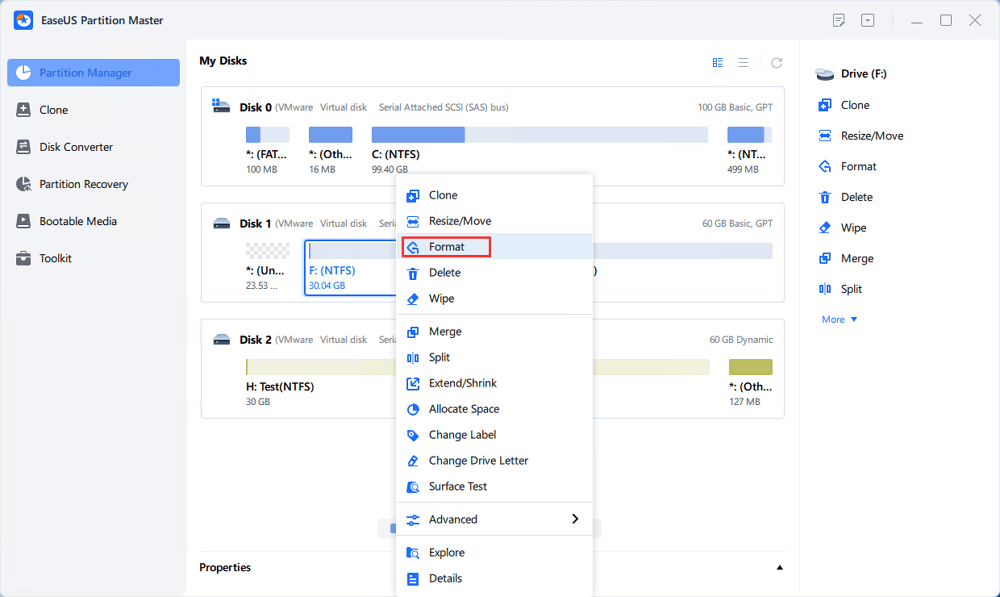
Step 2. In the new window, set the Partition label, File system (NTFS/FAT32/EXT2/EXT3/EXT4/exFAT), and Cluster size for the partition to be formatted, then click "OK".
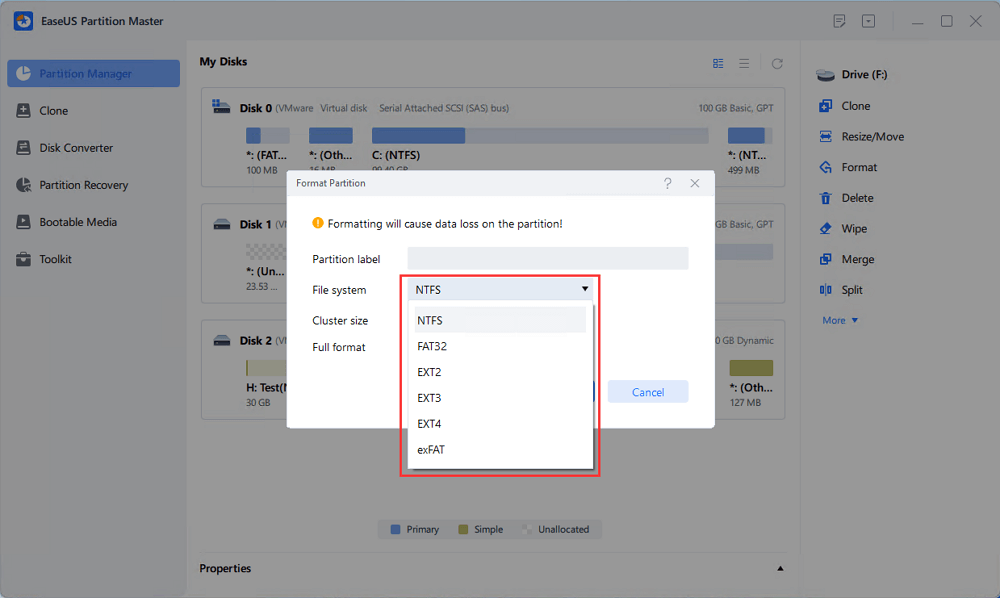
Step 3. Then you will see a warning window, click "Yes" in it to continue.
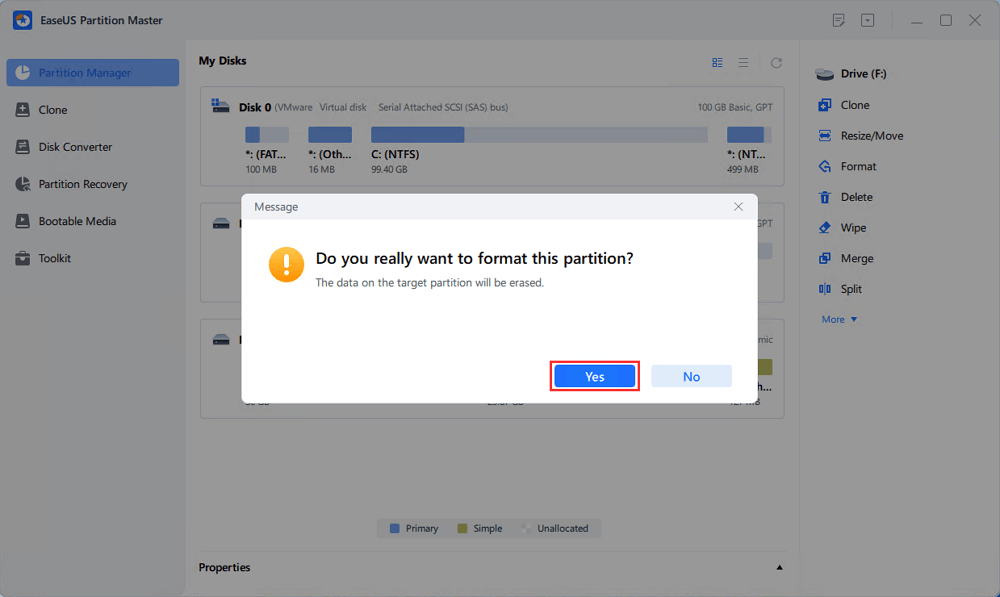
Step 4. Click the "Execute 1 Task(s)" button to review the changes, then click "Apply" to start formatting the partition on your hard drive.
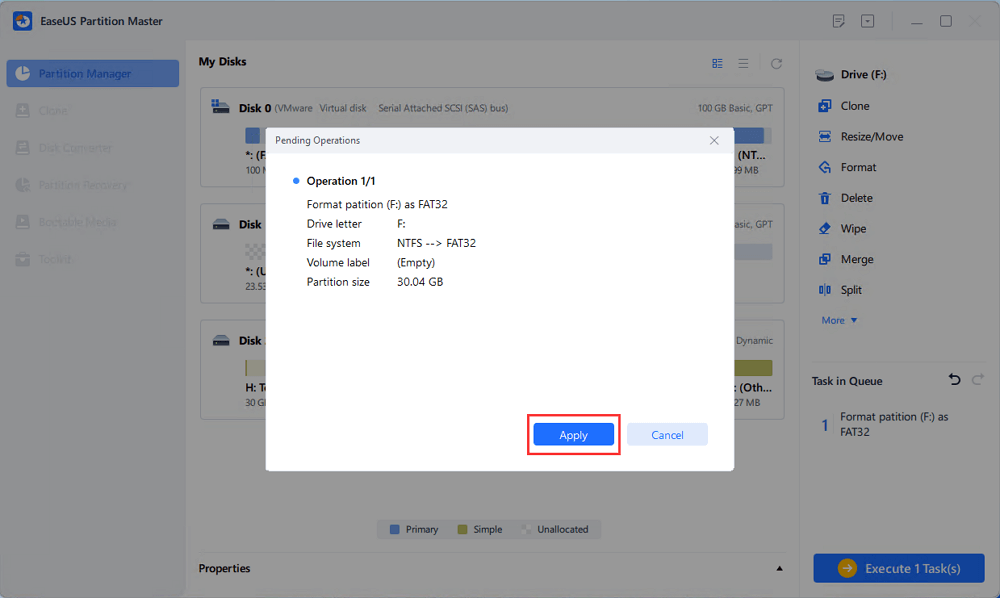
Other than formatting your drives, this all-in-one partition manager will help you unhide the partition and disk volumes. Moreover, you can utilize this software to clean up all existing partitions and file systems from your external drives and hard drives. All in all, EaseUS proves to be a one-stop shop for people looking to solve any problem related to hard drive volume and partitions.
Upon discussing the prominent features of this partition manager, we will put forward the steps to format the disk volumes to help fix the "Diskpart List Volume: There are no volumes" issue.
Fix 2. Recover the Partition
Other than formatting your disk volume, EaseUS Partition Master offers features that can help you recover partitions. Most of the time, the "Diskpart List Volume: There are no volumes" error arises due to corrupted partitions or files. Irrespective of the cause of this corruption, you can utilize this multi-featured partition manager to recover the files and partitions lost.
Here is how to use it to recover partition:
Step 1. Open EaseUS Partition Master and click "Partition Recovery". Select the target disk with your lost partition and click "New Scan".
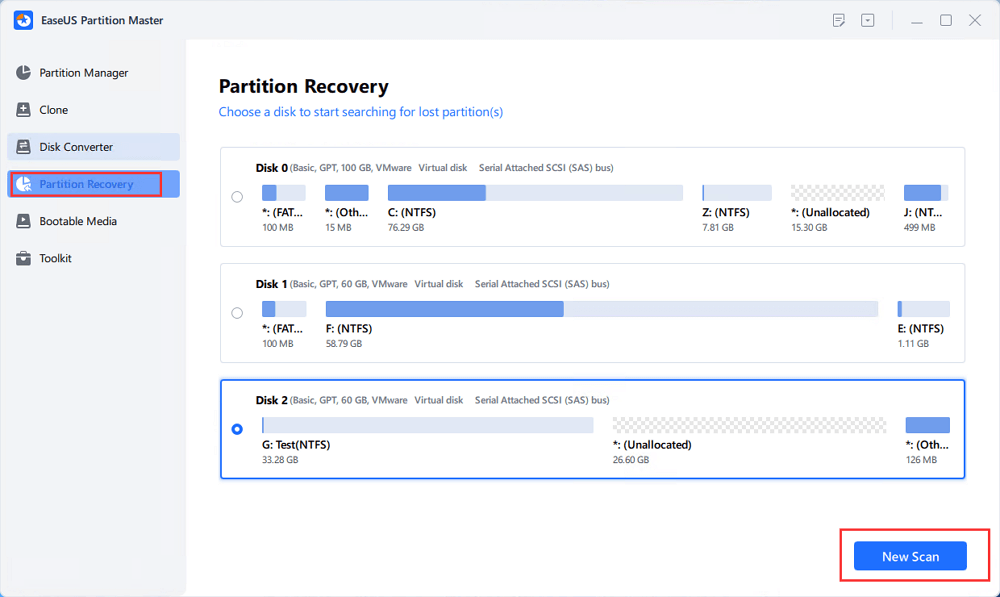
Step 2. Wait patiently to let the software execute "Quick Scan" and "Full Scan" operation. It will mark your deleted partition as "lost" as the Status section. Select the lost partition, and click "Recover".
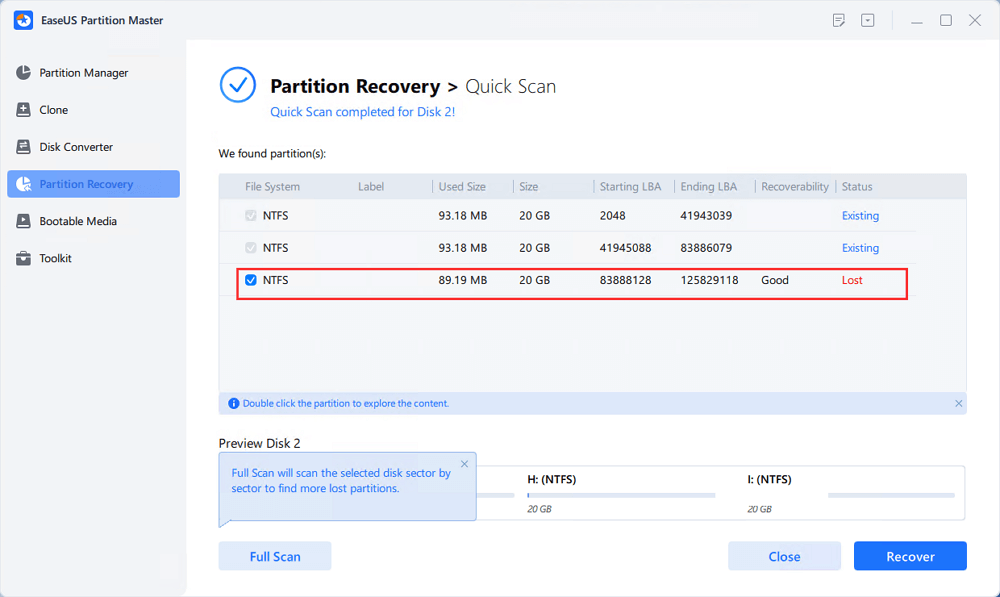
You can also double click on the partition you're looking for to preview its content and click "OK" to confirm.
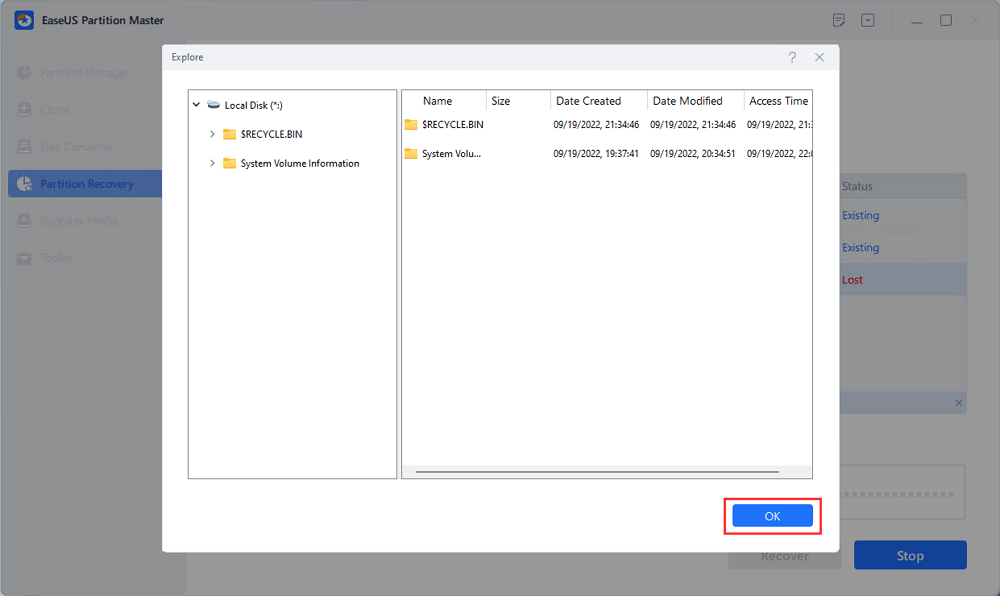
Step 3. Wait patiently and click "Done" when the partition recovery process completes.
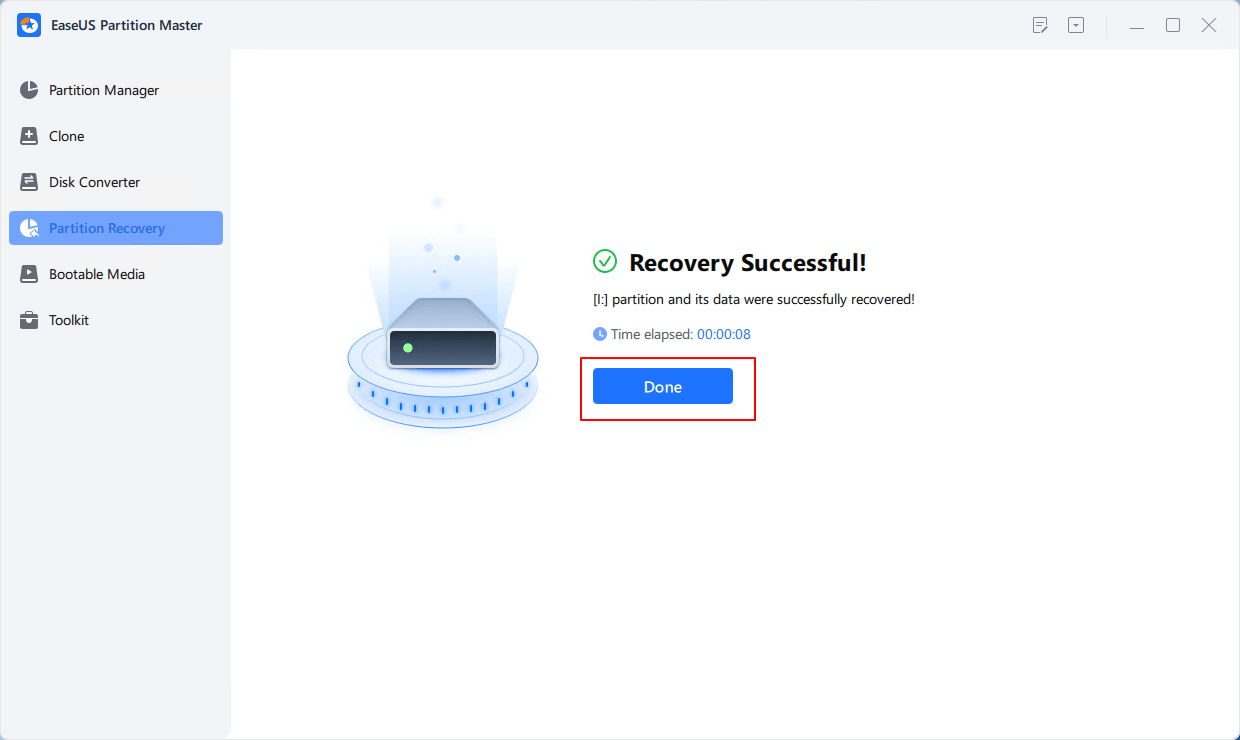
As we have discussed, this multi-dimensional disk volume manager presents more than one way to fix the "Diskpart List Volume: There are no volumes" issue. Here, we will help you recover the partition on Windows 11/10 with the help of these detailed instructions.
Why There Are No Volumes in Diskpart?
Previously, we have briefly mentioned a number of reasons that can cause the "Diskpart List Volume: There are no volumes" error within your system. Now, let's get into the details of each of these causes to gain enough knowledge to fix this problem.
- File System Incompatibility: Windows recognizes specific file systems, such as FAT and NTFS, through the diskpart. However, this built-in partition manager will not be able to identify the volumes if the external hard drive is formatted with an unfamiliar file system.
- Deleted or Lost Partitions: When you accidentally delete a partition due to changes in the OS or virus infection, the space will become unallocated. Therefore, this space is not recognized as a volume, so diskpart will report that there are no volumes.
- Unrecognized Data: Sometimes, diskpart may not show any volumes when there is data on the drive that the computer fails to recognize. So, the "Diskpart List Volume: There are no volumes" error occurs due to corruption or a file system error.
- External Hard Drives: Your drive will have no volume if the external hard drive is new and has not been initialized. Therefore, you need to initialize the drive and create a partition that Windows can recognize.
Share this article and let more users know the causes behind there are no volumes in Diskpart.
Conclusion
As we conclude, we can say that you can face the "Diskpart List Volume: There are no volumes" error due to many reasons explained throughout this article. So, you need to have knowledge about all these causes to be able to apply the relevant fix. Irrespective of the reason for this issue, EaseUS Partition Master will stand out as a practical solution due to its diverse disk partition and volume management features.
Therefore, you can apply its volume formatting and partition recovery features to help the diskpart function recognize the volumes. Keeping in view all these functionalities, we urge you download this multi-dimensional partition manager in your system to manage your disks properly. Share this article and let more users know about it.
FAQs About There Are No Volume in Diskpart
Throughout this article, we have tried to present the best possible solutions to the "Diskpart List Volume: There are no volumes" issue. However, users still having any questions related to disk volume-related problems can read these well-explained answers.
1. How do I show hidden volumes in the diskpart?
Here's how you can reveal hidden volumes using the "Diskpart" functionality within the Command Prompt application.
- To start this operation, open the "Run" dialog box by pressing the "Windows + R" keys. Moving forward, type "cmd" in the "Open" text box to launch the Command Prompt on your screen.
- In the Command Prompt window, enter "diskpart" to launch the Diskpart functionality. Then, use the "list volume" command to view all partitions on your device.
- Finally, identify the hidden partition and execute "select volume n," where "n" is the number of the hidden partition. Finally, assign a letter to the partition with the command "assign:" to make it accessible in Windows Explorer.
2. How do you assign a letter to a volume in diskpart?
Users can make use of diskpart within the Command Prompt to assign a drive letter to newly made or hidden partitions or volumes.
- Start the process by accessing the Command Prompt and executing the "diskpart" command to initiate this functionality.
- Afterward, run the "list volume" and "select volume n" command to choose any particular volume within the hard drive. At the end, type and execute the "assign letter:" command to give any specific letter to your selected volume.
3. How do I show all volumes in the diskpart?
To reveal all the volumes present within your hard drive, you can make use of the diskpart by using the following steps.
Instructions: Begin this particular task by entering the Command Prompt on your system and running the "diskpart" command. After launching this functionality, write and execute the "list volume" command to reveal all the volumes present in your drive.
How Can We Help You
About the Author
Sherly joined EaseUS in 2022 and she has always loved writing articles and enjoys the fun they bring. She receives professional training here, focusing on product performance and other relative knowledge. She has written over 200 articles to help people overcome computing issues.
Product Reviews
-
I love that the changes you make with EaseUS Partition Master Free aren't immediately applied to the disks. It makes it way easier to play out what will happen after you've made all the changes. I also think the overall look and feel of EaseUS Partition Master Free makes whatever you're doing with your computer's partitions easy.
Read More -
Partition Master Free can Resize, Move, Merge, Migrate, and Copy disks or partitions; convert to local, change label, defragment, check and explore partition; and much more. A premium upgrade adds free tech support and the ability to resize dynamic volumes.
Read More -
It won't hot image your drives or align them, but since it's coupled with a partition manager, it allows you do perform many tasks at once, instead of just cloning drives. You can move partitions around, resize them, defragment, and more, along with the other tools you'd expect from a cloning tool.
Read More
Related Articles
-
SanDisk Format Solution: Format SanDisk to The Best Performance on Your Own
![author icon]() Tracy King/2025/04/28
Tracy King/2025/04/28 -
How to Make Nintendo 3DS System Read SD Card Over 32GB
![author icon]() Daisy/2025/04/28
Daisy/2025/04/28 -
8 Fixes: Can't Install Windows on GPT or Windows Cannot Be Installed to This Disk Error
![author icon]() Daisy/2025/04/28
Daisy/2025/04/28 -
How to Check SSD Speed in CMD [Full Guide for Windows 11/10]
![author icon]() Cici/2025/04/28
Cici/2025/04/28
Hot Topics
EaseUS Partition Master

Manage partitions and optimize disks efficiently








